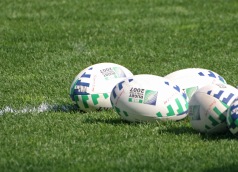 In
recent times, we’ve seen the NZRFU and IRB adopt various experimental
law variations to keep the ball in play longer, with fewer stoppages and
more running rugby, thereby creating a more free-flowing, faster and
exciting style of play.
In
recent times, we’ve seen the NZRFU and IRB adopt various experimental
law variations to keep the ball in play longer, with fewer stoppages and
more running rugby, thereby creating a more free-flowing, faster and
exciting style of play.You may recall the stat (right or wrong, but it’s the point that matters) that at one stage only 27mins of an 80min game were actually real running time. The rest of the time was used up in fixed plays/stoppages like scrums, line outs etc. A necessary part of the game, but not the key parts. Not the purpose of rugby. ELV’s aimed to improve this. To spend more time playing the running game, less time stationary. Keeping the ball in play.
Now think about your sales process? When was the last time you looked at how much time was spent doing the core sales activity, versus the time spent doing the bits surrounding it (the stoppages). Is the balance right? Are you ‘keeping the ball in play’.
There are many conflictions in sales that can prevent/inhibit us from selling – CRM notes, admin, responding to internal emails etc. Sure, some of these things need to be done. But are you consciously or unconsciously choosing to let them rank ahead of sales activity?
Like the NZRFU and IRB – you need to look at what ‘sales time variations’ you need to put in place to limit the things that prevent you from true sales activity to increase the portion of your available time to ‘sales running time’ rather than stoppages. Keeping the ball in play.
Truly think about it. You have so many hours in the week, how many of them do you truly dedicate to sales? If not many, why? What things are you letting prevent you from selling.
Maybe you need to follow the direction of rugby and change the way you ref your sales time to keep the ball in play more often?
No comments:
Post a Comment